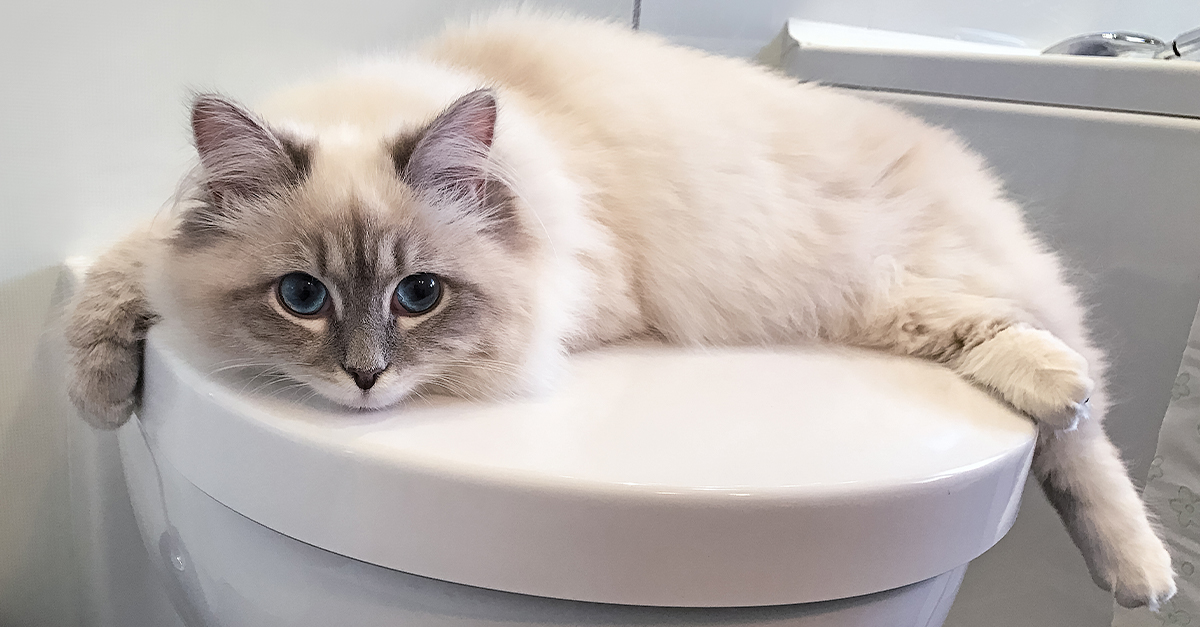Hazards of Flushing Cat Poop Down Your Toilet - Avoid Potential Problems
Hazards of Flushing Cat Poop Down Your Toilet - Avoid Potential Problems
Blog Article
The writer is making several great pointers about How to Dispose of Cat Poop and Litter Without Plastic Bags in general in the content further down.

Introduction
As cat proprietors, it's necessary to be mindful of exactly how we get rid of our feline friends' waste. While it might seem practical to flush feline poop down the toilet, this method can have destructive repercussions for both the setting and human health.
Ecological Impact
Purging cat poop presents unsafe pathogens and bloodsuckers right into the water supply, positioning a considerable risk to marine environments. These impurities can negatively influence aquatic life and concession water high quality.
Health and wellness Risks
Along with environmental worries, flushing feline waste can additionally pose health and wellness threats to human beings. Feline feces might have Toxoplasma gondii, a parasite that can cause toxoplasmosis-- a possibly extreme health problem, specifically for pregnant women and individuals with weakened immune systems.
Alternatives to Flushing
The good news is, there are safer and more liable ways to get rid of cat poop. Think about the following options:
1. Scoop and Dispose in Trash
The most typical approach of throwing away cat poop is to scoop it into an eco-friendly bag and throw it in the trash. Make certain to use a devoted trash inside story and dispose of the waste immediately.
2. Usage Biodegradable Litter
Go with eco-friendly cat litter made from materials such as corn or wheat. These litters are environmentally friendly and can be safely thrown away in the garbage.
3. Bury in the Yard
If you have a lawn, think about burying cat waste in a designated location far from veggie gardens and water sources. Make certain to dig deep adequate to avoid contamination of groundwater.
4. Set Up a Pet Waste Disposal System
Invest in a pet dog garbage disposal system particularly designed for cat waste. These systems make use of enzymes to break down the waste, reducing smell and ecological impact.
Conclusion
Accountable family pet possession expands past giving food and sanctuary-- it also involves proper waste administration. By refraining from flushing feline poop down the commode and opting for alternate disposal techniques, we can decrease our ecological footprint and secure human health and wellness.
Why Can’t I Flush Cat Poop?
It Spreads a Parasite
Cats are frequently infected with a parasite called toxoplasma gondii. The parasite causes an infection called toxoplasmosis. It is usually harmless to cats. The parasite only uses cat poop as a host for its eggs. Otherwise, the cat’s immune system usually keeps the infection at low enough levels to maintain its own health. But it does not stop the develop of eggs. These eggs are tiny and surprisingly tough. They may survive for a year before they begin to grow. But that’s the problem.
Our wastewater system is not designed to deal with toxoplasmosis eggs. Instead, most eggs will flush from your toilet into sewers and wastewater management plants. After the sewage is treated for many other harmful things in it, it is typically released into local rivers, lakes, or oceans. Here, the toxoplasmosis eggs can find new hosts, including starfish, crabs, otters, and many other wildlife. For many, this is a significant risk to their health. Toxoplasmosis can also end up infecting water sources that are important for agriculture, which means our deer, pigs, and sheep can get infected too.
Is There Risk to Humans?
There can be a risk to human life from flushing cat poop down the toilet. If you do so, the parasites from your cat’s poop can end up in shellfish, game animals, or livestock. If this meat is then served raw or undercooked, the people who eat it can get sick.
In fact, according to the CDC, 40 million people in the United States are infected with toxoplasma gondii. They get it from exposure to infected seafood, or from some kind of cat poop contamination, like drinking from a stream that is contaminated or touching anything that has come into contact with cat poop. That includes just cleaning a cat litter box.
Most people who get infected with these parasites will not develop any symptoms. However, for pregnant women or for those with compromised immune systems, the parasite can cause severe health problems.
How to Handle Cat Poop
The best way to handle cat poop is actually to clean the box more often. The eggs that the parasite sheds will not become active until one to five days after the cat poops. That means that if you clean daily, you’re much less likely to come into direct contact with infectious eggs.
That said, always dispose of cat poop in the garbage and not down the toilet. Wash your hands before and after you clean the litter box, and bring the bag of poop right outside to your garbage bins.
https://trenchlesssolutionsusa.com/why-cant-i-flush-cat-poop/

We were shown that write-up about How to Dispose of Cat Poop and Litter Without Plastic Bags through an associate on a different web property. Sharing is caring. Who knows, you may very well be helping someone out. Thanks a lot for your time. Don't forget to visit our blog back soon.
Explore Report this page